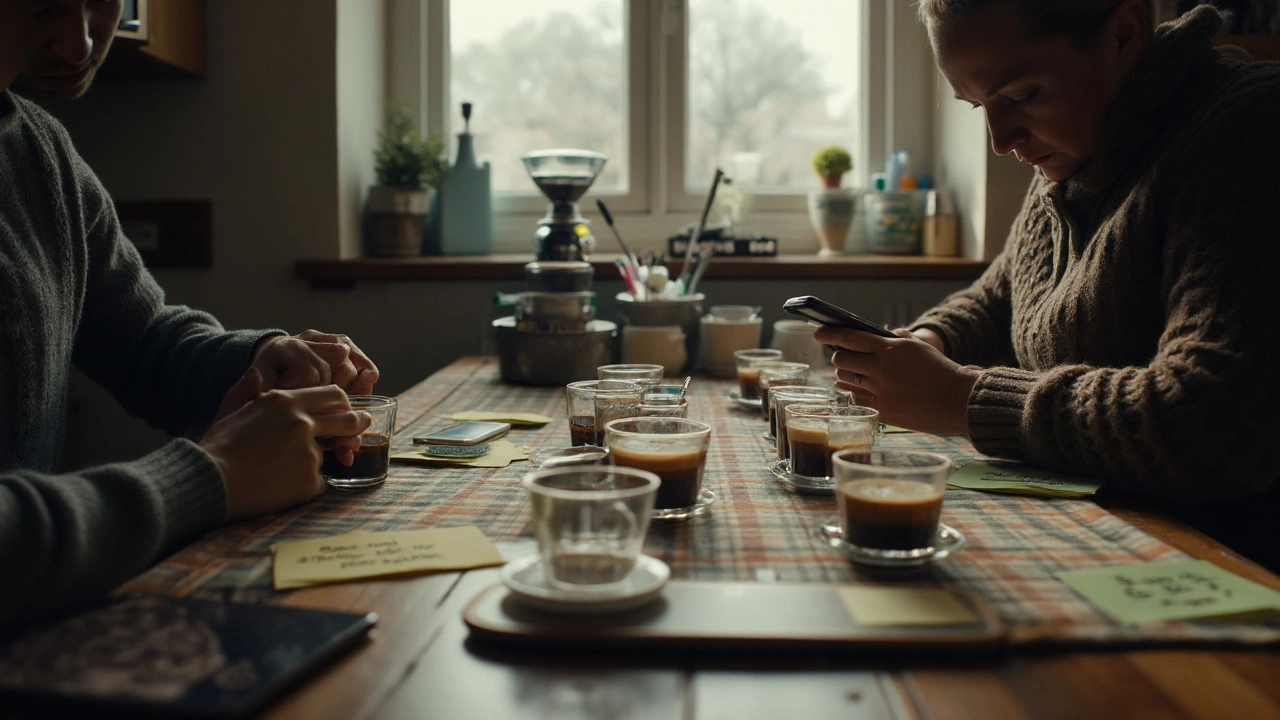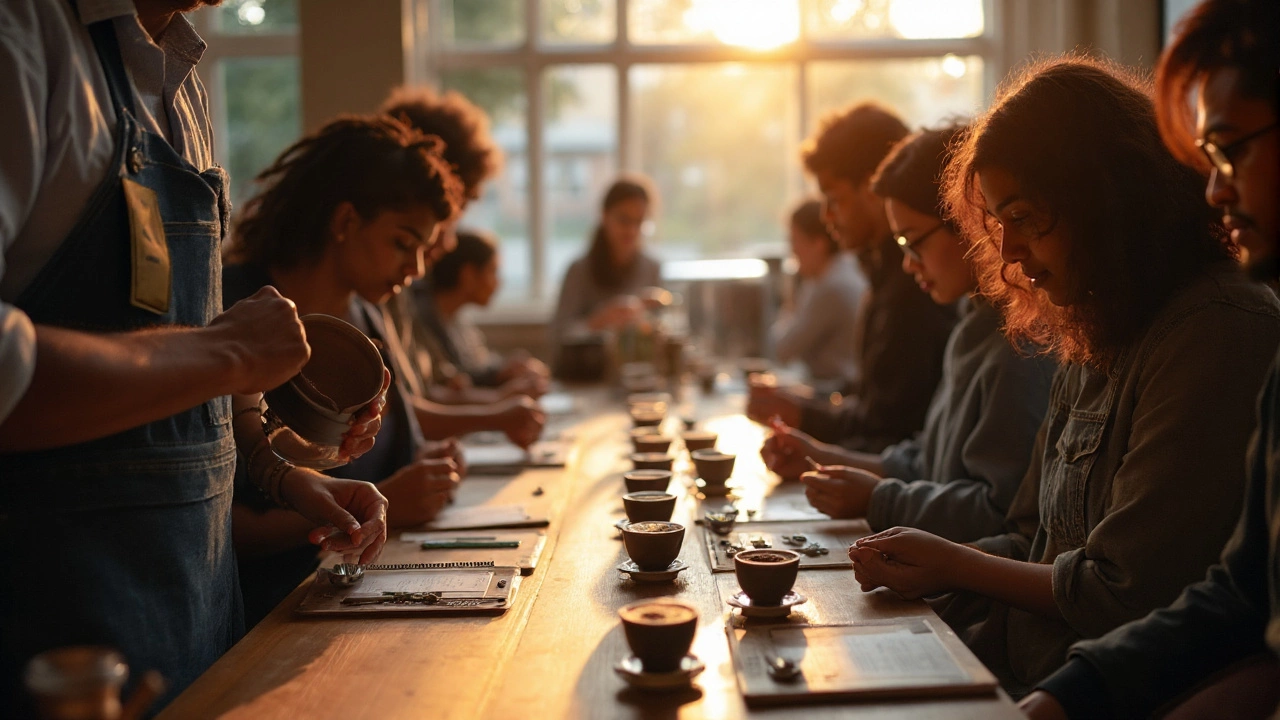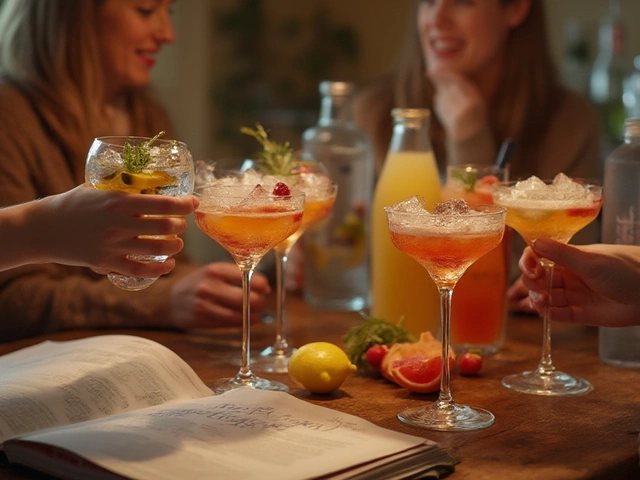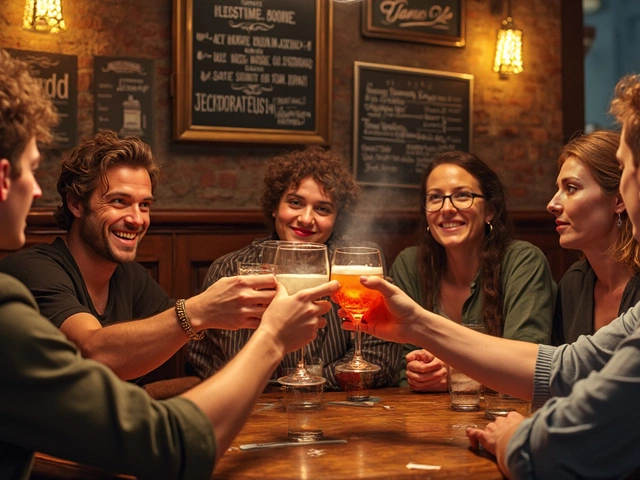Coffee isn’t just “strong” or “weak.” It can taste like blueberry pie, cola, or toasted hazelnut-if you know how to look for it. That’s what tastings are for. Yes, they exist, and no, they’re not some secret club. I live in Sydney and host community cuppings; most people walk in thinking it’s fancy and walk out shocked by how different coffees taste when you compare them side by side. You’ll learn how to do it in a café or at home, what it costs, and how to get the most out of the experience without pinging your nervous system with caffeine.
- TL;DR: Yes, coffee tastings are a thing. They’re guided sessions-often called “cuppings”-where you compare coffees to train your palate, spot flavor notes, and understand quality.
- Common formats: cuppings (spoon and bowls), flights (small brewed cups), and guided espresso tastings. Most run 45-90 minutes.
- What you’ll learn: aroma, acidity, sweetness, body, finish, and defects. You’ll also discover origins and processing styles you actually enjoy.
- Cost and caffeine: Expect AUD $10-$40 for a public session here in Australia (US $10-$35). Taste, don’t chug; use the spit cup.
- At home: You can cupping-style taste with a grinder, kettle, scale, spoons, and identical bowls. Use consistent ratios, same grind, and 92-96°C water.
What Coffee Tastings Are (and Why They’re Worth Your Time)
If wine has tastings, coffee does too. They’re just less hyped. The most common format is the cupping used by the Specialty Coffee Association (SCA). You grind multiple coffees, smell the dry grounds, add hot water, break the crust with a spoon, and slurp to spray coffee across your palate. It looks intense but feels casual once you start. You can absolutely spit, and you should if you’re tasting more than a handful of samples.
What’s the point? Calibrate your senses. Coffee can have 800+ identified aroma compounds (documented by food chemists across decades), and the World Coffee Research Sensory Lexicon lists around a hundred sensory attributes. Once you compare coffees side by side, flavors you never noticed pop out. One example from a recent Sydney session: two Ethiopian coffees-same region, different processing. The washed lot tasted like lemon zest and jasmine, the natural lot like blueberry jam and cocoa nibs. Same species, wildly different cups.
Three common tasting formats you’ll see:
- Cupping: Standardized, bowls and spoons, no filters. Great for learning fundamentals and comparing lots fairly.
- Flights: Small brewed cups (pour-over or batch brew), served together. Easier for beginners, closer to how you actually drink coffee.
- Espresso/triangulation: Espresso shots compared; or a “triangulation” game where you spot the odd cup out. Great for advanced tasters and baristas.
What to expect at a public session: A host explains the lineup (origin, variety, process), runs you through aromatic phases (dry fragrance and wet aroma), then you taste at different temperatures. Flavors get clearer as coffee cools. You’ll note acidity type (citrus vs. malic apple vs. phosphoric cola-like), sweetness (brown sugar vs. honey), body (light like tea or heavy like cream), finish, and any defects (baked, phenolic, papery).
Is this subjective? Partly. But there’s a framework behind it. The SCA cupping protocol sets water temp (about 93°C), bowl size, ratios, timing, and scoring. That consistency is what lets pros trade and evaluate coffee fairly. Even as a beginner, following a few simple rules will unlock the fun without the jargon.
| Format | What You Taste | Typical Duration | Approx Caffeine Intake | Typical Cost (AUD/USD) | Best For |
|---|---|---|---|---|---|
| SCA-style cupping | 4-8 coffees, same ratio, spoon tasting | 60-90 min | 60-120 mg if spitting; 150-250 mg if swallowing | $10-$40 / $10-$35 | Learning structure and vocabulary |
| Brewed flight | 3-5 small cups (pour-over/batch) | 30-60 min | 100-200 mg (depends on serving sizes) | $12-$30 / $10-$25 | Beginners; real-world drinking |
| Espresso tasting | 2-4 shots, sometimes milk drinks | 30-45 min | 80-200 mg | $12-$30 / $10-$25 | Barista skills, blend comparison |
| Triangulation | 3 cups per set, find the odd one out | 30-60 min | 60-150 mg | Often free at events | Sharpening sensory accuracy |
Notes on caffeine: An espresso shot averages around 60-80 mg; 200 ml of filter coffee often lands in that same range depending on brew strength. The USDA reports broad ranges because brewing variables matter. The trick at tastings is pacing-small sips, spit cup, and water breaks.
How To Do a Coffee Tasting (At a Café or at Home)
Here’s a simple, no-drama way to run a tasting at home that mirrors a pro cupping. You don’t need lab gear. A few matching bowls, a decent grinder, a kettle with temp control if you have one, and two spoons will do.
Gear checklist:
- Grinder (burr grinder preferred for consistency)
- Kettle (target 92-96°C water)
- Scale (to keep your ratios honest)
- 4-6 identical cups/bowls (200-250 ml capacity)
- 2-4 spoons (deep bowls; soup spoons work in a pinch)
- Timer, notepad, pen, water, palate cleansers (plain crackers)
Beans: Pick 3-5 coffees that differ clearly. For example: Ethiopia (washed), Brazil (natural), Colombia (washed), and Sumatra (wet-hulled). If you want to compare processing, choose one origin in washed vs. natural. Freshly roasted (7-21 days off roast) helps, but don’t obsess-just avoid very old beans.
Step-by-step (home cupping):
- Weigh coffee and water. Use the SCA ratio: 8.25 g of coffee per 150 ml of water (you can scale to your bowl size). If your bowl is 220 ml, use ~12 g coffee.
- Grind medium-coarse, slightly coarser than pour-over. Grind each coffee into its own bowl. Label them A, B, C, etc.
- Smell the dry grounds. Note dry fragrance (chocolate, floral, nutty, fruity?).
- Start your timer and pour hot water (about 93°C) to the brim of each bowl. Start with A, move across, keeping pour height and speed consistent.
- At 4:00 minutes, “break the crust.” Place your nose just over the bowl. Use the back of your spoon to push the floating grounds away from you three times, inhaling the aroma. This is the dramatic part-and often where you first go “whoa.”
- Skim the grounds. Use two spoons to scoop off the remaining foam and grounds, leaving clean liquid below.
- Taste at 8-12 minutes. Slurp from your spoon with some force to spray coffee across your palate. Spit if you’re doing many bowls. Note acidity type (citrus? apple?), sweetness (caramel? honey?), body (thin/juicy/creamy), flavor notes, and finish.
- Keep tasting as cups cool to 40-60°C. Many flavors show up only when cooler-berries, florals, spice.
- Compare, not just describe. Which cup is brightest? Which is sweetest? Which is simplest vs most complex? Ranking helps more than poetry.
Prefer a brewed flight? Here’s an easy flight method without spoons and crusts:
- Choose 3 coffees. Grind medium for pour-over.
- Brew each at a 1:16 ratio (15 g coffee to 240 g water) with 92-96°C water. Keep recipe constant across all three.
- Serve in identical cups. Taste side by side. Same rules: small sips, spit cup optional, record quick notes.
Water matters. If your tap water tastes great, you’re fine. If not, use filtered water around 75-150 ppm total hardness. Too soft and coffee tastes flat; too hard and it gets chalky. You don’t need a meter to enjoy this-just know that water can be the hidden variable.
Etiquette and hygiene (for public cuppings):
- Don’t double-dip your spoon into the bowls; use a tasting cup if provided.
- Perfume, aftershave, and lip balm can mess with the room’s aroma-skip them.
- Use the spit cup. It’s normal. No one’s judging you for not swallowing.
- Ask questions. Hosts love it; it’s how you learn faster.

Examples, Costs, and What You’ll Taste (Real-World Guide)
What might a session look like? Here are lineups I’ve used in Sydney this year and why they teach well:
- Processing spotlight: Ethiopia Guji (washed) vs. Ethiopia Guji (natural) vs. Ethiopia Guji (honey). You’ll taste how fruit intensity ramps up from washed to natural, with honey in the middle.
- Comfort to wild: Brazil natural (chocolate, peanut brittle) → Colombia washed (orange, panela) → Ethiopia natural (blueberry, jasmine). Great for newbies because the differences jump out.
- Acidity tour: Kenya AA (blackcurrant, tomato leaf brightness), Guatemala Huehuetenango (apple-like acidity), Sumatra (low acid, spice). This shows there’s more than “sour vs bitter.”
Expected costs in 2025: In Australia, many specialty cafés host public cuppings from free community events up to about $40, depending on the coffees featured (rare lots cost more). Private or corporate tastings run higher. In the US and UK, pricing is similar in local currency. You’ll usually get a handout, a flavor wheel printout, or a card to jot notes.
How to read tasting notes without rolling your eyes: They’re not promises, they’re reference points. “Blueberry” doesn’t mean jam poured into your cup-it means compounds reminiscent of blueberry show up, especially as the coffee cools. Your notes might say “berry” or “purple fruit,” and that’s fine. With practice, you’ll get more precise.
Here’s a quick flavor cheat that maps common origins to the vibes you’ll probably find:
- Ethiopia (washed): citrus, jasmine, black tea; light body, sparkling acidity.
- Ethiopia (natural): blueberry, strawberry, cocoa; fuller body, fruity aroma.
- Kenya: blackcurrant, grapefruit, tomato leaf; high, winey acidity.
- Colombia (washed): orange, panela, milk chocolate; balanced and sweet.
- Guatemala: apple, caramel, baking spice; round body.
- Brazil (natural): chocolate, peanut brittle, low acidity; comfort cup.
- Sumatra (wet-hulled): spice, cedar, herbal; low acidity, heavier body.
Milk drinkers, you’re not left out. Some tastings include a small milk pairing to show which coffees carry through milk. As a rule of thumb, naturals and lower-acid coffees pop in milk, while delicate washed Ethiopians can fade. That’s why cafés often blend with Brazil or Colombia for flat whites and cappuccinos.
Decision helper-pick your first tasting:
- If you like chocolate desserts: choose a Brazil vs. Colombia vs. Guatemala flight.
- If you love fruity drinks: pick Ethiopia (washed vs. natural) plus a Kenya.
- If you want low-acid comfort: Brazil and Sumatra, then add a balanced Colombia.
- If you’re an espresso nerd: go for a shot flight comparing single origin vs. blend at two recipes.
- If you’re sensitive to caffeine: ask for decaf in the lineup (Swiss Water or CO2 process) and spit the rest.
How cafés structure quality: Many follow SCA cupping steps and use scoring sheets (aroma, flavor, aftertaste, acidity, body, balance, uniformity, clean cup, sweetness). You don’t need to score to learn. Two simple questions beat a full sheet: Which cup would you drink a whole mug of? Which cup is most interesting even if you wouldn’t drink a full mug?
| Origin/Process | Typical Notes | Body | Acidity | Great Use Case |
|---|---|---|---|---|
| Ethiopia (washed) | Jasmine, lemon, black tea | Light | High, sparkling | Filter flight, iced pour-over |
| Ethiopia (natural) | Blueberry, strawberry, cocoa | Medium | Medium | Milk-friendly espresso, fruity filter |
| Kenya | Blackcurrant, grapefruit, tomato leaf | Medium | High, wine-like | Showcase in cuppings |
| Colombia (washed) | Orange, panela, milk chocolate | Medium | Medium | All-rounder for flights |
| Brazil (natural) | Chocolate, peanut brittle, nutty | Medium-heavy | Low | Milk-based drinks |
| Sumatra (wet-hulled) | Cedar, spice, herbal | Heavy | Low | Comfort brews |
Where to find a tasting: Specialty cafés, micro-roasters, and community cuppings. In Australia, plenty of roasteries host weekly or monthly sessions-often listed on their socials or newsletters. Coffee festivals and barista competitions also run public cuppings. If you don’t see one, ask your local roaster; most are happy to set one up for a small group.
Checklists, Pro Tips, and Your Biggest Questions
Pre-tasting checklist
- Skip strong perfume, aftershave, and flavored lip balm.
- Eat a light, neutral snack 30-60 minutes before (banana or plain toast).
- Bring water and a pen. Photos of bags help remember what you tasted.
- If caffeine-sensitive, plan to spit and limit to 4-6 cups.
- Set a goal: compare processes, origins, or brew methods. Focus beats chaos.
At-home cupping cheat sheet
- Ratio: 8.25 g per 150 ml water (SCA standard) or 1:18, consistent across bowls.
- Water: 92-96°C. If you lack a temp kettle, boil and wait ~60-90 seconds.
- Grind: medium-coarse, same setting for all coffees.
- Timing: Pour → break at 4:00 → skim → taste from 8:00 onward.
- Notes: 3 words per cup: “fruit-sweet-light” beats no notes. Refine later.
Flavor vocab starter kit
- Acidity types: citrus (lemon, lime), malic (apple, pear), phosphoric (cola-like), tartaric (grape).
- Sweetness: white sugar, caramel, honey, molasses.
- Body: thin, silky, creamy, heavy.
- Finish: short/clean, medium, long/coating, pleasant/bitter.
Common pitfalls
- Chugging hot coffee. Many notes show up only as cups cool-give it time.
- Changing multiple variables. Keep grind, ratio, and water the same.
- Perfume and gum ghosting your palate.
- Not spitting in big lineups-leads to jitters and dull senses.
Pro tips from the cupping table
- Slurp with intent. A loud slurp atomizes coffee, coating more taste receptors.
- Calibrate with a buddy. Describe separately, then compare. You’ll learn faster.
- Use reference cups. Include a “control” coffee you know well.
- Blind is kind. Hide the labels if you want to avoid bias from origin hype.
- Revisit at room temp. The best coffees often stay sweet and clear when cold.
Mini-FAQ
- Is a coffee tasting the same as a cupping? Cupping is one type of tasting, usually standardized with bowls and spoons. Tastings can also be brewed flights or espresso comparisons.
- Do I have to swallow? No. Spitting is normal and wise. You’ll taste better longer.
- Will I look silly slurping? Everyone slurps at cuppings. It’s technique, not drama.
- Can I do decaf? Yes. Ask for a decaf sample or include one at home. Good decaf (Swiss Water or CO2) still shows origin character.
- What about milk drinks? Some tastings include a milk pairing. If not, you can test at home: add the same milk to each coffee and compare.
- How do pros score coffee? Using SCA scoring sheets (aroma, flavor, aftertaste, acidity, body, balance, uniformity, clean cup, sweetness), usually out of 100.
- Is this just subjective? Perception is personal, but we use shared language and consistent methods. The World Coffee Research lexicon is the backbone for that vocabulary.
Next steps (pick your path)
- Beginner: Book a public cupping or brew flight, bring a friend, and aim to spot 1-2 differences per cup.
- Home explorer: Run a three-coffee cupping this weekend. Keep a simple log; repeat next month with new origins.
- Espresso fan: Compare a single origin vs. a house blend as straight shots and with milk.
- Sensitivity plan: Use the spit cup, cap your intake to six tastes, and hydrate.
Troubleshooting
- Everything tastes bitter: Lower water temp to ~92°C, check grind (go coarser), and ensure beans aren’t very old or darkly scorched.
- Everything tastes sour and thin: Increase brew temp to ~95°C, use a slightly finer grind, or extend contact time (in brewed flights).
- No flavors pop: Try more distinct coffees (e.g., Brazil vs. Ethiopia natural), and taste again when cooler.
- Palate fatigue: Take 2-3 minutes between cups, sip water, and use plain crackers.
Credibility notes: The structure here mirrors the Specialty Coffee Association cupping protocol (water temp near 93°C, bowl size and timing), and the flavor language aligns with the World Coffee Research Sensory Lexicon. Caffeine ranges reflect common lab figures and USDA reference values, but your actual intake depends on brew strength and volume. None of that is to scare you off-just to say there’s a real foundation under the fun.
If you’re near a specialty café, ask when they run their next cupping. If you’re at home in your kitchen, grab three coffees and a couple of spoons. Ten minutes in, you’ll start hearing the same sentence I hear at every tasting in Sydney: “I had no idea coffee could taste this different.”


